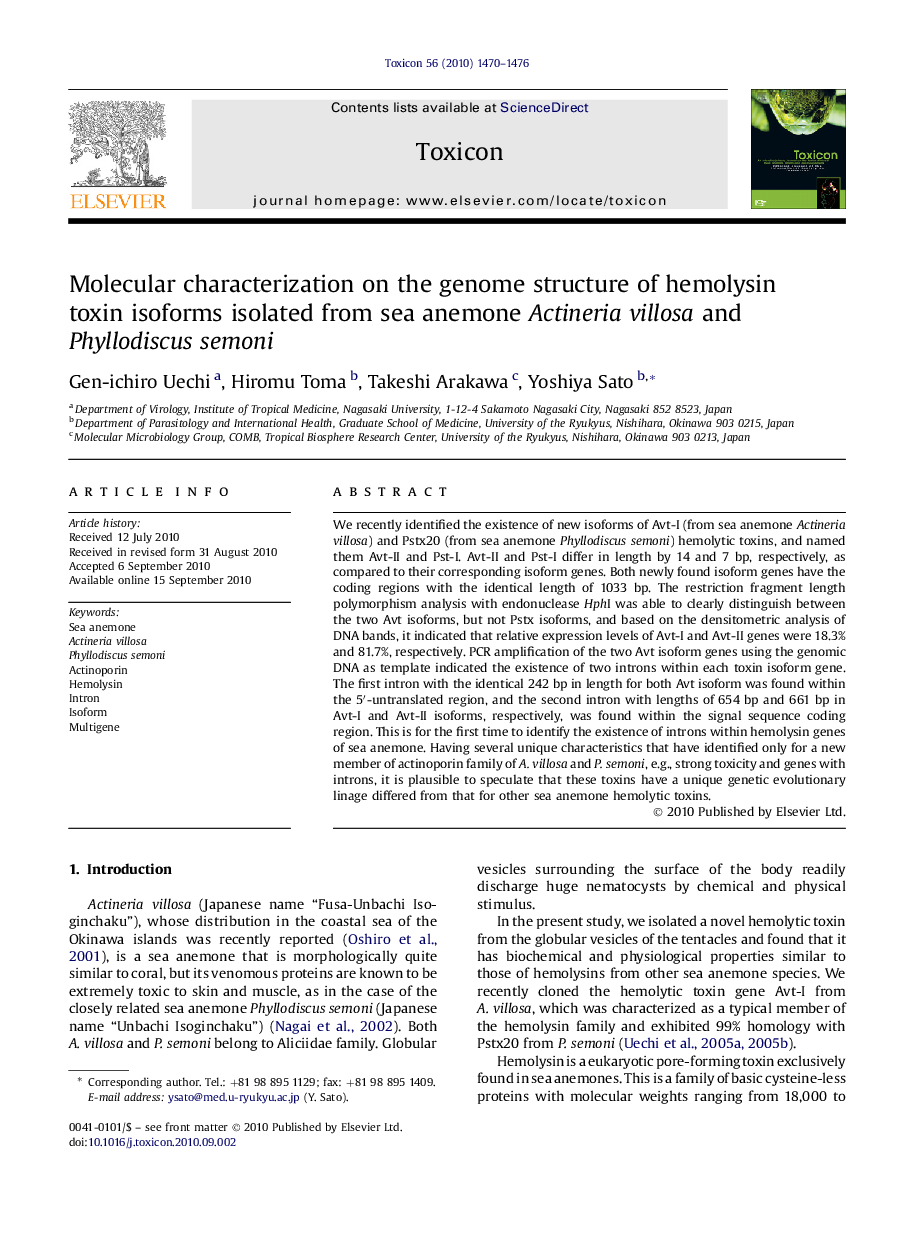| کد مقاله | کد نشریه | سال انتشار | مقاله انگلیسی | نسخه تمام متن |
|---|---|---|---|---|
| 2065062 | 1076903 | 2010 | 7 صفحه PDF | دانلود رایگان |

We recently identified the existence of new isoforms of Avt-I (from sea anemone Actineria villosa) and Pstx20 (from sea anemone Phyllodiscus semoni) hemolytic toxins, and named them Avt-II and Pst-I. Avt-II and Pst-I differ in length by 14 and 7 bp, respectively, as compared to their corresponding isoform genes. Both newly found isoform genes have the coding regions with the identical length of 1033 bp. The restriction fragment length polymorphism analysis with endonuclease HphI was able to clearly distinguish between the two Avt isoforms, but not Pstx isoforms, and based on the densitometric analysis of DNA bands, it indicated that relative expression levels of Avt-I and Avt-II genes were 18.3% and 81.7%, respectively. PCR amplification of the two Avt isoform genes using the genomic DNA as template indicated the existence of two introns within each toxin isoform gene. The first intron with the identical 242 bp in length for both Avt isoform was found within the 5′-untranslated region, and the second intron with lengths of 654 bp and 661 bp in Avt-I and Avt-II isoforms, respectively, was found within the signal sequence coding region. This is for the first time to identify the existence of introns within hemolysin genes of sea anemone. Having several unique characteristics that have identified only for a new member of actinoporin family of A. villosa and P. semoni, e.g., strong toxicity and genes with introns, it is plausible to speculate that these toxins have a unique genetic evolutionary linage differed from that for other sea anemone hemolytic toxins.
Journal: Toxicon - Volume 56, Issue 8, December 2010, Pages 1470–1476